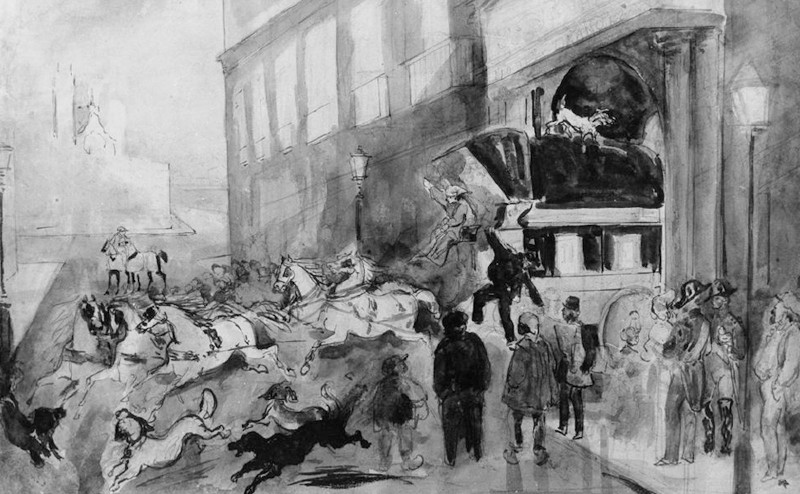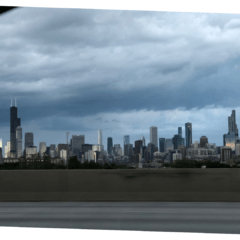
In the last essay I wrote for Artblog, I tried to give an outline of the most elementary gesture of an art practice understood as “critical”. I tried to show, in broad and general strokes, the basic shape of what defines a critical art practice. I noted that such a practice begins with an attempt to “suspend all presuppositions of art” by reflecting on the social meaning of art’s own existence. What I mean by this is quite simple: a critical art practice begins by reflecting on the fact that it is already caught in a specific social moment—what we could call “the present”—and, therefore, within specific ways of living, economic, political, etc., that frame it.
Accordingly, art is not an “autonomous” realm of cultural production that is cut off from, or outside, the unfolding of everyday life. Rather, it is something that takes place within reality at a given socio-historical moment. I would like to build on these initial reflections by developing the very idea of this “taking place within”. I will refer to this, more precisely, as art’s immanence (I take this word to mean here, quite simply, a status of “being within something,” a kind of “indwelling”).
I will develop the idea of “art’s immanence” across two essays and in relation to two salient theoretical precedents: Charles Baudelaire’s 1863 “The Painter of Modern Life” and Walter Benjamin’s 1934 “The Author as Producer” (Charles Baudelaire, 1821-1867; Walter Benjamin, 1892-1940). My aim is to build on my earlier reflections by drawing the reader’s attention to two moments that underscore the specificity of the artist’s immanence to the times in which she/he/they exist/s.
The reason for this is not, however, purely “historical,” that is, to show where in the past “immanence” has been discussed. Rather, it is to present a genealogy of a discourse that tries to render specific the structure and import of immanence on two levels: (1) as a reality condition of art practice and (2) as a constitutive aspect of its artistic endeavors. I want to claim that if we are to be concerned with a critical art practice, we need to grasp “immanence” not only in a more specific manner, but also in its own specificity (this means above all that art’s immanence is not always the same at all times—this means that the sense of art’s “immanence” is rooted in its own time and differs from one historical moment to the next).
At the most general level, at stake here is the attempt to begin to give some sense of what it means to speak of being an artist “in” our own present, our own times, that is, “in” capitalism.
The artist in capitalism: the crowd
The issue of art’s “immanence” to social life has long been, and indeed continues to be, central to the comprehension of art. The reason for this centrality is that an understanding of art’s immanence to social life sharpens the comprehension of its social necessity and function. However, terms that are central to the understanding of art can be overlooked and taken for granted. This leads to two distinctive problems: the term is reduced to loose definitions, ones that, when pushed, do not really mean very much; and any critical edge that the term may have is blunted.
In Baudelaire’s “The Painter of Modern Life” and Benjamin’s “The Author as Producer,” the emphasis is placed not so much in the attempt to elaborate a method of interpreting works of art as self-enclosed entities, put on display before an audience. Rather, Baudelaire and Benjamin point beyond the limits of the artwork by setting up, in its place, a discourse on the social function of the artist’s practice: that is, of the very way in which art is realized and produced.
Baudelaire’s text takes as its guiding premise that the day-to-day experiences of modern society contain the eternal truths of artistic beauty. For the French poet and critic, “modern society” is more precisely understood in terms of the modern phenomenon of the urban metropolis that is formed under the conditions of capitalism (although Baudelaire does not refer to it as “capitalism”). It is the kind of urban life produced by capitalism that Baudelaire takes as the raw material of his reflections; hence his fascination with the marginal, the inorganic, the fetid, the intoxicated, the ephemeral and the fugitive, that is, the dynamic underside of social life produced by and in the relations of exchange. Importantly, however, Baudelaire’s theoretical intervention does not consist of a denunciation of capitalist life (thus, of capitalism itself).
The author is not concerned with setting up signs that read: “Look how disgusting and unbearable life is under our current conditions. We need to abolish it!” (The abolishment of capitalism—and its formation of private property, especially—is the politico-philosophical principle of Karl Marx and Frederick Engels’ 1848 Communist Manifesto.) Baudelaire is also not oriented by the construction of an “alternative” way of existence, one free of the problems and struggles of social life in the mid-19th century. Rather, he is concerned with developing what we could call a “poetic diagnosis of capitalist life”. Such a diagnosis requires a consciously reflected position: the absolute immanence of the author to the times in which he exists and, more precisely, to the ways in which life presents itself.
This is why Baudelaire is so interested in the relatively unknown artist Constantin Guys. What Guys gives us, in his quick, fragmentary sketches, is the form of the transitory quality of modernity and the subjects that inhabit it. He does this by putting himself in the very heart of the new subject of modern life: the crowd. The artist of modernity is, for Baudelaire, an artist whose practice emerges within the experiences of urban living. In this instance, it is the experience of being swallowed up by an indeterminate, nameless crowd. In urban life, the artist seems to suggest, one cannot be part of an organized collective in any spontaneously identifiable way; one is always already a sort of insignificant object of the crowd.
It is the crowd that subjugates the subject; it is the crowd that converts the individual into a modern subject, a subject that has no name, no immediately identifiable existence other than one defined by the system of exchange (the modern individual does not pre-exist the modern crowd; rather, s/he is created by it). In the context of capitalist life, this amounts to being reduced to a one-dimensional state of existence, one defined by merely selling one’s capacity to work for a wage. (The reader will do well to recall Edgar Allen Poe’s 1840 “The Man of the Crowd”. Poe, whom Baudelaire was hugely indebted to, gives us a poetic anatomy of the crowd and the subjectivities that make it up. Not names, but personas, or better yet, social stereotypes. Poe presents before us: “satisfied business-like” types and “merchants, attorneys, tradesmen, stockjobbers…pick-pockets…gamblers,” etc.)
The crowd is the great equalizer. For Baudelaire, the artist of modernity grasps this. But it is grasped only by way of the experience of the interiority, the immanence, to the crowd. This is, perhaps, one way of understanding why Guys asks to remain “anonymous” in the essay: to have a name, a signature, is to be the artist depicting the crowd from a position external to it. As an anonymous agent, the artist can be, to recall Poe’s title, “of the crowd”.
Not imitation, but immanence
Baudelaire’s 1863 essay is significant in that it attempts to expose the sense in which the artist is internal to a particular social life—society at a given moment—that s/he does not determine, but rather is determined by. The artist, then, does not engage with a set of rules or regulations that precede his/her practice. Rather, the artist’s practice emerges out of the reflection of the actuality of society and its ways of being—in this instance, the existence of crowds—at a particular point in time. For Baudelaire, the artist develops their work within the crowd.
A final clarification is required: Baudelaire’s sense of “art’s immanence” is not the same as the idea of “art imitating life”. The sense of “art imitating life” is based on the assumed separation of, on the one hand, “art,” and on the other hand, “life”. Baudelaire’s insights are oriented in distinction to this assumed opposition. He is trying to give some sense to the artist of modern life, that is, a relation not ultimately defined by a separation of artist from life, but rather one based on the experience of being in life, of being of it.
To be “in life” forces the artist to reshape their practice. This is achieved by suspending one’s presuppositions about “the way to make art”. Instead of assuming, for example, that painting follows a particular set of formal laws, the artist of modernity “follows” the way in which existence is, and tries to produce an art that is born of the experience of this existence. For Baudelaire, this amounts to the following: works do not represent life, but rather try to be “more living than life itself”.
In the next essay, I will explore the way in which Walter Benjamin develops “the immanence of art” in his text “The Author as Producer”.









